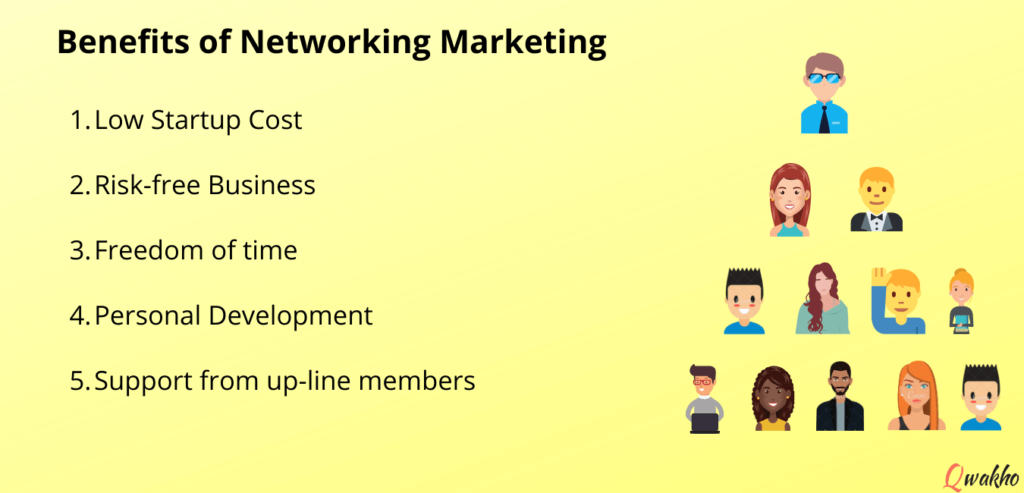What is the difference between digital marketing and network marketing? are you ready to explore ? Digital marketing and network marketing are two different ways to promote products and services. Both aim to boost sales and raise brand awareness, but they use different methods and target different audiences. Let’s look at these differences closely.
Definition and Characteristics:
Digital Marketing
Digital marketing includes all marketing activities that use digital channels to connect with customers. It is a modern method that is very important today.
Key Characteristics of Digital Marketing:
- Focus on online and digital channels
- Data-driven and measurable results
- Targeted marketing based on demographics, interests, and behavior
- Relatively low investment costs compared to traditional marketing methods
Key Components of Digital Marketing
Search Engine Optimization (SEO):
SEO means improving website content to rank higher in search results. It helps bring more organic traffic to a site.
Content Marketing:
This strategy creates and shares useful content to attract and keep a specific audience. It includes blog posts, videos, infographics, and other valuable materials for potential customers.
Social Media Marketing:
This uses platforms like Facebook, Instagram, Twitter, and LinkedIn to connect with people, raise brand awareness, and drive traffic to a website.
Email Marketing:
This method sends promotional messages to a targeted group of prospects or customers.
Pay-Per-Click (PPC) Advertising:
In this online marketing model, advertisers pay each time someone clicks on their ad.
Affiliate Marketing:
This strategy partners with other businesses or individuals to promote products or services based on performance.
Network Marketing
Network marketing, or multi-level marketing (MLM), involves selling a product or service and recruiting others to do the same. Network marketers create distributors who make money from their own and their team’s sales. Personal relationships and word-of-mouth marketing drive this model.
Key Characteristics of Network Marketing:

- Emphasis on personal relationships and team building
- Commissions earned on sales generated by both the individual and their team
- Potential for residual income and passive earnings
- Often involves substantial investment in products, training, and team development
Key Differences:
1. Distribution Channel:
Online and digital channels dominate digital marketing’s reach. Websites, social media, search engines, and email are used by marketers to reach customers.
However, network marketing distributes goods and services through personal connections and word-of-mouth. Distributors earn commissions on sales made by themselves and their team members by building a network of sellers.
2. Commission Structure:
Online campaign performance determines digital marketing compensation. Marketers can earn a share of website, affiliate, and PPC sales.
Network marketers receive commissions on sales from both themselves and their teams. Distributors get a cut of their network’s sales.
3. Scalability:
Digital marketing is more scalable than network marketing. Online campaigns may reach any number of potential clients and can be simply scaled up.
Network size and member recruiting limit network marketing’s scalability. Building a large, successful network takes time, effort, and resources.
4. Risk and Investment:
Digital marketing typically requires a lower investment compared to network marketing. Marketers may need to invest in tools and software, but the overall cost is relatively low.
Network marketing often involves substantial investment in products, training, and team development. Distributors may need to purchase inventory, attend conferences, and invest in marketing materials.
Benefits and drawbacks:
Benefits of Digital Marketing:

- Wider Audience Reach: Digital marketing allows businesses to reach a global audience through online channels, increasing their potential customer base.
- Measurable Results: Digital marketing campaigns can be easily tracked and measured, providing valuable insights into campaign performance and return on investment (ROI).
- Targeted Marketing: Digital marketing techniques enable businesses to target specific demographics, interests, and behaviors, ensuring that their message reaches the most relevant audience.
- Lower Investment Cost: Compared to traditional marketing methods, digital marketing typically requires a lower investment, making it accessible to businesses of all sizes.
Drawbacks of Digital Marketing:
- Competition in the Online Space: The online space is highly competitive, and businesses need to differentiate their brand and content to stand out.
- Requirement for Technical Skills: Digital marketing often requires technical skills, such as website development, content creation, and data analysis.
- Limited Personal Interaction: Digital marketing primarily takes place online, which can limit opportunities for personal interaction with customers.
Benefits of Network Marketing:

- Residual Income Potential: Network marketing offers the potential for residual income, as distributors can earn commissions on sales generated by their entire network, even after they stop actively selling.
- Opportunity for Relationship Building: Network marketing involves building personal relationships with customers and team members, fostering a sense of community and support.
- Personal Growth: Network marketing can provide opportunities for personal growth and development, as distributors learn valuable skills in sales, marketing, and leadership.
Drawbacks of Network Marketing:
- Potential Pyramid Scheme Risks: Some network marketing companies may operate as pyramid schemes, where the focus is on recruiting new members rather than selling products or services.
- High Initial Investment: Network marketing often requires a substantial initial investment in products, training, and team development.
- Limited Scalability: Network marketing’s scalability is constrained by the size of the network and the recruitment efforts of its members.
Conclusion:
Digital and network marketing have pros and cons. Digital marketing is perfect for firms that want to reach many people, measure results, and target specific groups. It’s cheaper and more scalable.
Network marketing, however, is good for residual income, relationship building, and personal growth. This method requires a larger initial expenditure and less scalability than digital marketing.
The firm’s demands, goals, and resources determine whether to use digital or network marketing. Businesses and individuals may choose the best marketing strategy for their situation by understanding the main differences between these two techniques.

